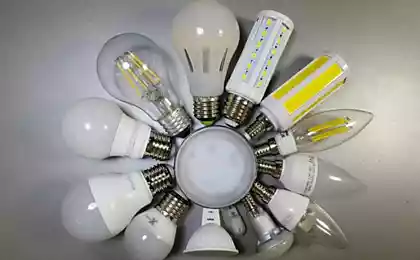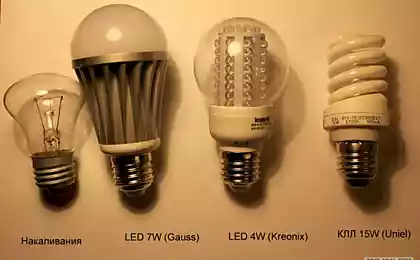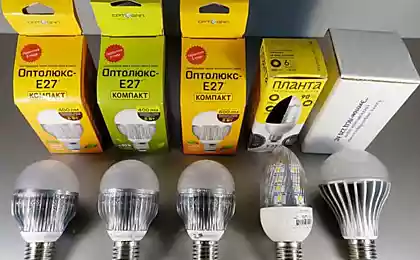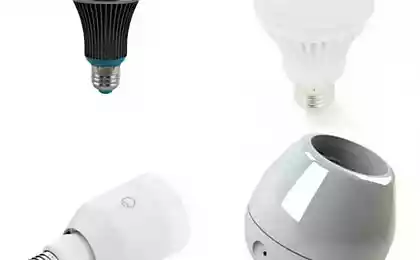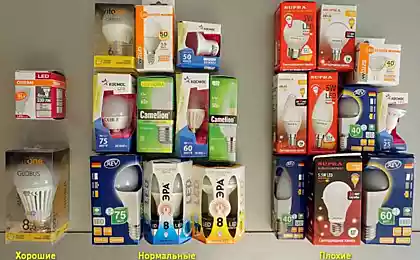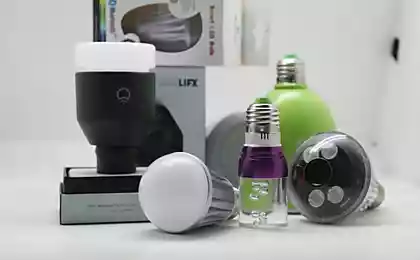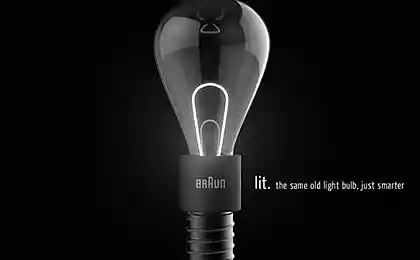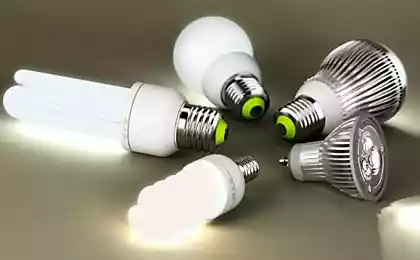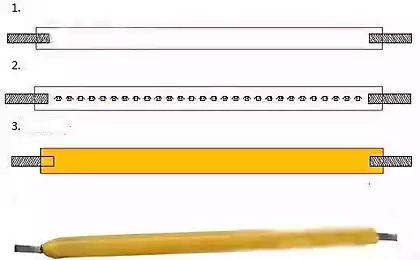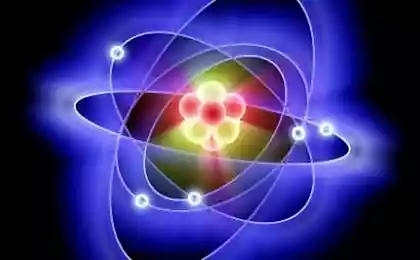661
Damn
January 27, 1880 Thomas Edison received his patent for the main light bulb, putting if you are not point, then a large exclamation mark in the long history of its invention. Today the fluorescent lamps we often hear, when they once again banned, including in Russia. While such ideas are in the air, "Attic" versed, is it really gone his usual "bulb Ilyich".
31 Dec 2013, CNN published an obituary an incandescent light bulb in honor of the entry into force of the ban on the manufacture and import of 40 - and 60-watt light bulbs in the United States. The obituary cited the words of the great-grandson of Edison, David, who was called the great "futurist and green" and said that he would come to the liking of the global transition to a new, more modern and environmentally friendly light sources.
Was Thomas Edison a "green" or not, but the light which he gave a long commercial life for more than a century, ecologists are now in the doghouse. And I think if our children are the last to see "live" working light bulb, no one was particularly upset.
Let there be light (electric)
Adanowsky patent number 223 898 is one of more than a thousand American patents. The inventor got his after in 1879 created a budget light bulb, which burned as much as 14.5 hours — not bad for the time indicator. From this achievement Edison made a show. The New York Herald wrote that to see the public presentation of strange lights came hundreds of people, despite the bad weather.

The patent to Thomas Edison for the electric lamp
By 1880, lights, interested, seems, when in March a public report about innovations in lighting did engineer Alexander Siemens (cousin of the founder of Siemens AG, Werner von Siemens) in the audience instead of the usual gas light installed newfangled electric arc lights.
With arc lamps, strictly speaking, begins the story of electric lighting. Shine electric arc generated between two electrodes. These are very bright lights for cheaper gas and well suited for street and industrial lighting, but they had drawbacks: for example, the rods in the coal arc lamps gradually burned and needed to be changed regularly. In addition, for small spaces they were too bright and even fire.
A pioneer of the electric arc is the Russian Vasily Petrov, and the first such pilot lamp in the early nineteenth century introduced the British Royal society, sir Humphry Davy. Frankly speaking, I identify in such a device, the lighting device is difficult.
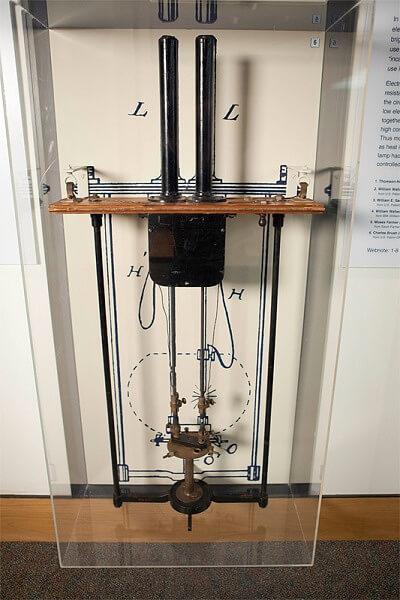
Arc lamp
But the most famous coal arc lamp was the so-called "Yablochkov candle", invented in 1875, a Russian electrical engineer Pavel Yablochkov. These arc the "spark" has conquered the world exhibition in Paris in 1878, followed by the streets of London and other capitals.
The question of who is the first inventor of the incandescent bulb is difficult, not only because different countries like to pull the blanket over himself in the debate about the priority. For example, the Scotsman James Bowman Lindsay in 1835 showed the audience, in fact, just a bulb and even revered in its light a book, but then seems to have moved on to other interests and didn't do much to Refine the invention or to protect it.
Russian engineer Alexander Lodygin received in Russia and in several European countries a patent for the incandescent lamp 11 Jul 1874. He believed at least, in Russia, invented the first pumped from a glass flask air to the coal thread in a lamp burned slower. Subsequently, Lodygin was experimenting with metallic filaments, but the commercial success of these developments had not yet been received.
The canadian patent for the incandescent lamp in the same 1874, received Henry Woodward and Matthew Evans. But a couple friends didn't have the money to continue to engage in their invention, and they sold the patent to Edison. The British inventor of the incandescent lamp is considered to be Joseph Swan: its working lamp, very similar to adanowsky, Swan demonstrated in February 1879 (and also received a patent in 1880). Even in the States themselves from Edison were rivals: its patent in the summer of 1877 had to get engineers William Sawyer and Elbon man, who even founded the country's first company manufacturing light bulbs.

A copy of the light bulb Thomas Edison
In 1881 was held in Paris Electrical exhibition, where their light presented to all, who made them, from Edison and Swan to Briton Hiram Maxim (who invented the machine gun). Apparently, the choice between them was difficult because all the lights were already quite similar to each other.
Its modern look is the tungsten filament in the form of double springs, smooth bulb without the typical XIX century "pimpochku" top, standard base light bulb found after the 1920-ies. By this time invented an economical way to make thin tungsten wire and decided that the air from the flask it is better to pump from the opposite side. A standard threaded connection for light bulbs Edison had developed in 1909.
Shines and warms
If you come to an incandescent light bulb strictly and boring, it is not a lighting fixture, and heating: only 5% of the energy consumed by the lamp outputs in the form of light, the rest wasted as heat. And "warm" bulbs a room, if it is not an aquarium with a turtle, comes out quite expensive.
Energy saving light bulbs are useful not only for the wallet but for the Earth's climate changing because of human activities. That is why the biggest producers of light bulbs together with environmental activists and even governments joined in the Global Lighting Challenge — a global campaign to replace the 10 billion light bulbs to led. So far have replaced "only" 187,5 million, and if you want you can through the website to "register" and your chandelier or lamps in the entrance.
In addition, incandescent bulbs are short-lived: now the standard lifetime is about 1000 hours against tens of thousands of hours of competitors — fluorescent, and led lamps. On this subject there is a story about the Phoebus cartel, uniting the largest manufacturers of lamps worldwide in the 1920-1930-ies it was believed that there was thought out intentionally to make their products short-lived to provide for her in constant demand.
The global campaign against incandescent bulbs began in this century and in the 17 years covered the whole of North America and almost all of southern, Europe, China, India, Australia and South Africa. Our country is determined is slightly lower in others, but goes in the same direction. The Russian Ministry of energy in the summer of 2016 offered in the country to ban trafficking of light bulbs with a capacity of 60 and 75 watt (recall that the ban on 100-watt bulb operates in Russia since 2011). According to the energy Ministry, in 2014, the Russians bought 168 million such light bulbs — against 110 million modern led lamps. To return to this idea, the Ministry promises in February and March of this year.
While the Russian energy Ministry, says, it time to compress the ring around inefficient lamps in the US act decisively. In may last year, the national Department of energy has proposed that after 2020 to switch to led lighting, refusing not only from the old incandescent bulbs, but fluorescent "spirals". The latter is not like an ordinary American consumers so that the company General Electric even close their production in the United States.
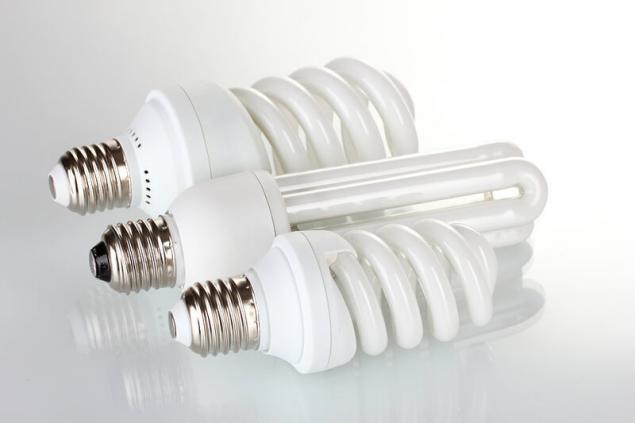
Compact fluorescent lamps
Bans, of course, bypass all countries: bulbs of 100-watt, like magic, turn into a 99-watt, the most powerful of them "perekvalifitsiruetsya" from lighting to heating, and in the US, for example, first, no one thought to ban so-called three-step incandescent bulbs with adjustable brightness, is especially popular in hotels. But what will be illuminated a bright future, it is still clear.
New old light bulbs
In 2010, according to the International energy Agency, the world is still sold 12.5 billion incandescent lamps per year. But the inexorable force of the market: fast cheaper alternatives, especially led light, quenched their outdated competitors. By 2020 led bulbs, as it is believed, can be compared to retail price, not only fluorescent, but also with the latest "live" at that time, incandescent lamps, and then their attack will stop at nothing, happy experts.
Or is it not? A year ago, the staff of MIT published in the journal Nature Nanotechnology article about how they managed to increase the luminous efficiency of the bulb — how well a light source produces light visible to the human eye. For this part of heat, which when the lamp is lost to the external environment, refers to its heating — by using photonic crystals. In theory it is possible to increase the light efficiency of lamp is up to an unprecedented 40% — from the current 2%!
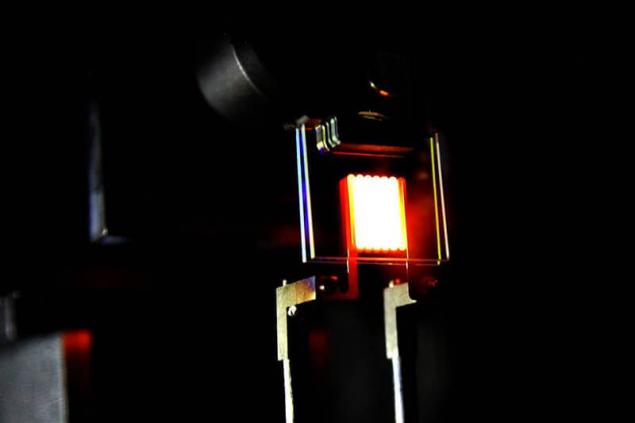
While the prototype, created by scientists, "only" three times more efficient than conventional light bulbs, which, however, already comparable with some energy-efficient competitors. But scientists emphasize that they are not trying to make a new light bulb and experimented with the technology, and their work is still very far from the practice and especially from the store shelves.
In the midst of all this progress and even a few in spite of him in the firehouse California Livermore still lit light bulb was first screwed in 1901, during the life of Edison. "Centennial bulb" as it is called for a million-plus hours of burning several times moved and survived all who put, 20 U.S. presidents and three web cameras mounted in order that everyone could monitor her condition (last still works). Perhaps this is the only working bulb, which could claim the title of "bulbs of Ilyich" in the end, when it was done manually, Lenin was barely 30.
To repeat such a record is unlikely to succeed: it is, apparently, a "difficult" light of the Shelby Electric company, founded by engineer Adolf Shaie. Most researchers these bulbs are inclined to believe that the secret of longevity of California's "centennial bulb" — more of a thick carbon filament. In addition, this light is rarely turned off, which is also "good for health": the active power on and off reduces the life of the bulbs.
Perhaps truly obituaries incandescent lamp will need when finally burn this "burning" light. However, the informal representative of the bulbs (and site administrator) Steve Bunn said light bulb, according to those who cares, will work for another couple of centuries. Just in case the firehouse is another light-the same age as Shelby, but screw her, if that, or replace the led — "the case of future generations." published
P. S. And remember, only by changing their consumption — together we change the world! ©
Source: chrdk.ru/tech/vse-do-lampochki
31 Dec 2013, CNN published an obituary an incandescent light bulb in honor of the entry into force of the ban on the manufacture and import of 40 - and 60-watt light bulbs in the United States. The obituary cited the words of the great-grandson of Edison, David, who was called the great "futurist and green" and said that he would come to the liking of the global transition to a new, more modern and environmentally friendly light sources.
Was Thomas Edison a "green" or not, but the light which he gave a long commercial life for more than a century, ecologists are now in the doghouse. And I think if our children are the last to see "live" working light bulb, no one was particularly upset.
Let there be light (electric)
Adanowsky patent number 223 898 is one of more than a thousand American patents. The inventor got his after in 1879 created a budget light bulb, which burned as much as 14.5 hours — not bad for the time indicator. From this achievement Edison made a show. The New York Herald wrote that to see the public presentation of strange lights came hundreds of people, despite the bad weather.

The patent to Thomas Edison for the electric lamp
By 1880, lights, interested, seems, when in March a public report about innovations in lighting did engineer Alexander Siemens (cousin of the founder of Siemens AG, Werner von Siemens) in the audience instead of the usual gas light installed newfangled electric arc lights.
With arc lamps, strictly speaking, begins the story of electric lighting. Shine electric arc generated between two electrodes. These are very bright lights for cheaper gas and well suited for street and industrial lighting, but they had drawbacks: for example, the rods in the coal arc lamps gradually burned and needed to be changed regularly. In addition, for small spaces they were too bright and even fire.
A pioneer of the electric arc is the Russian Vasily Petrov, and the first such pilot lamp in the early nineteenth century introduced the British Royal society, sir Humphry Davy. Frankly speaking, I identify in such a device, the lighting device is difficult.

Arc lamp
But the most famous coal arc lamp was the so-called "Yablochkov candle", invented in 1875, a Russian electrical engineer Pavel Yablochkov. These arc the "spark" has conquered the world exhibition in Paris in 1878, followed by the streets of London and other capitals.
The question of who is the first inventor of the incandescent bulb is difficult, not only because different countries like to pull the blanket over himself in the debate about the priority. For example, the Scotsman James Bowman Lindsay in 1835 showed the audience, in fact, just a bulb and even revered in its light a book, but then seems to have moved on to other interests and didn't do much to Refine the invention or to protect it.
Russian engineer Alexander Lodygin received in Russia and in several European countries a patent for the incandescent lamp 11 Jul 1874. He believed at least, in Russia, invented the first pumped from a glass flask air to the coal thread in a lamp burned slower. Subsequently, Lodygin was experimenting with metallic filaments, but the commercial success of these developments had not yet been received.
The canadian patent for the incandescent lamp in the same 1874, received Henry Woodward and Matthew Evans. But a couple friends didn't have the money to continue to engage in their invention, and they sold the patent to Edison. The British inventor of the incandescent lamp is considered to be Joseph Swan: its working lamp, very similar to adanowsky, Swan demonstrated in February 1879 (and also received a patent in 1880). Even in the States themselves from Edison were rivals: its patent in the summer of 1877 had to get engineers William Sawyer and Elbon man, who even founded the country's first company manufacturing light bulbs.

A copy of the light bulb Thomas Edison
In 1881 was held in Paris Electrical exhibition, where their light presented to all, who made them, from Edison and Swan to Briton Hiram Maxim (who invented the machine gun). Apparently, the choice between them was difficult because all the lights were already quite similar to each other.
Its modern look is the tungsten filament in the form of double springs, smooth bulb without the typical XIX century "pimpochku" top, standard base light bulb found after the 1920-ies. By this time invented an economical way to make thin tungsten wire and decided that the air from the flask it is better to pump from the opposite side. A standard threaded connection for light bulbs Edison had developed in 1909.
Shines and warms
If you come to an incandescent light bulb strictly and boring, it is not a lighting fixture, and heating: only 5% of the energy consumed by the lamp outputs in the form of light, the rest wasted as heat. And "warm" bulbs a room, if it is not an aquarium with a turtle, comes out quite expensive.
Energy saving light bulbs are useful not only for the wallet but for the Earth's climate changing because of human activities. That is why the biggest producers of light bulbs together with environmental activists and even governments joined in the Global Lighting Challenge — a global campaign to replace the 10 billion light bulbs to led. So far have replaced "only" 187,5 million, and if you want you can through the website to "register" and your chandelier or lamps in the entrance.
In addition, incandescent bulbs are short-lived: now the standard lifetime is about 1000 hours against tens of thousands of hours of competitors — fluorescent, and led lamps. On this subject there is a story about the Phoebus cartel, uniting the largest manufacturers of lamps worldwide in the 1920-1930-ies it was believed that there was thought out intentionally to make their products short-lived to provide for her in constant demand.
The global campaign against incandescent bulbs began in this century and in the 17 years covered the whole of North America and almost all of southern, Europe, China, India, Australia and South Africa. Our country is determined is slightly lower in others, but goes in the same direction. The Russian Ministry of energy in the summer of 2016 offered in the country to ban trafficking of light bulbs with a capacity of 60 and 75 watt (recall that the ban on 100-watt bulb operates in Russia since 2011). According to the energy Ministry, in 2014, the Russians bought 168 million such light bulbs — against 110 million modern led lamps. To return to this idea, the Ministry promises in February and March of this year.
While the Russian energy Ministry, says, it time to compress the ring around inefficient lamps in the US act decisively. In may last year, the national Department of energy has proposed that after 2020 to switch to led lighting, refusing not only from the old incandescent bulbs, but fluorescent "spirals". The latter is not like an ordinary American consumers so that the company General Electric even close their production in the United States.

Compact fluorescent lamps
Bans, of course, bypass all countries: bulbs of 100-watt, like magic, turn into a 99-watt, the most powerful of them "perekvalifitsiruetsya" from lighting to heating, and in the US, for example, first, no one thought to ban so-called three-step incandescent bulbs with adjustable brightness, is especially popular in hotels. But what will be illuminated a bright future, it is still clear.
New old light bulbs
In 2010, according to the International energy Agency, the world is still sold 12.5 billion incandescent lamps per year. But the inexorable force of the market: fast cheaper alternatives, especially led light, quenched their outdated competitors. By 2020 led bulbs, as it is believed, can be compared to retail price, not only fluorescent, but also with the latest "live" at that time, incandescent lamps, and then their attack will stop at nothing, happy experts.
Or is it not? A year ago, the staff of MIT published in the journal Nature Nanotechnology article about how they managed to increase the luminous efficiency of the bulb — how well a light source produces light visible to the human eye. For this part of heat, which when the lamp is lost to the external environment, refers to its heating — by using photonic crystals. In theory it is possible to increase the light efficiency of lamp is up to an unprecedented 40% — from the current 2%!

While the prototype, created by scientists, "only" three times more efficient than conventional light bulbs, which, however, already comparable with some energy-efficient competitors. But scientists emphasize that they are not trying to make a new light bulb and experimented with the technology, and their work is still very far from the practice and especially from the store shelves.
In the midst of all this progress and even a few in spite of him in the firehouse California Livermore still lit light bulb was first screwed in 1901, during the life of Edison. "Centennial bulb" as it is called for a million-plus hours of burning several times moved and survived all who put, 20 U.S. presidents and three web cameras mounted in order that everyone could monitor her condition (last still works). Perhaps this is the only working bulb, which could claim the title of "bulbs of Ilyich" in the end, when it was done manually, Lenin was barely 30.
To repeat such a record is unlikely to succeed: it is, apparently, a "difficult" light of the Shelby Electric company, founded by engineer Adolf Shaie. Most researchers these bulbs are inclined to believe that the secret of longevity of California's "centennial bulb" — more of a thick carbon filament. In addition, this light is rarely turned off, which is also "good for health": the active power on and off reduces the life of the bulbs.
Perhaps truly obituaries incandescent lamp will need when finally burn this "burning" light. However, the informal representative of the bulbs (and site administrator) Steve Bunn said light bulb, according to those who cares, will work for another couple of centuries. Just in case the firehouse is another light-the same age as Shelby, but screw her, if that, or replace the led — "the case of future generations." published
P. S. And remember, only by changing their consumption — together we change the world! ©
Source: chrdk.ru/tech/vse-do-lampochki
In Mexico city, a taxi appeared with a hybrid power plant
Effective web designs from the Studio demiweb.pro
